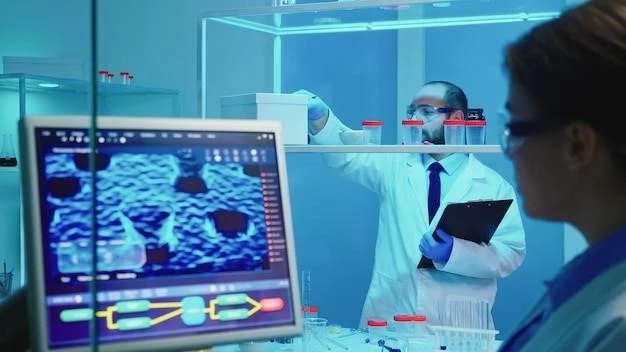Introduction
Gamma-sarcoglycanopathy is a rare genetic muscular dystrophy characterized by progressive muscle weakness‚ degeneration‚ and loss of muscle mass. It is caused by mutations in the gamma-sarcoglycan gene.
Overview of Gamma-sarcoglycanopathy
Gamma-sarcoglycanopathy‚ also known as LGMD type 5‚ is an autosomal recessive genetic disorder that falls under the umbrella of limb-girdle muscular dystrophies. Individuals with this rare condition experience muscle weakness that progresses over time due to mutations in the gamma-sarcoglycan gene. The hallmark of gamma-sarcoglycanopathy is the deterioration of muscle tissue‚ leading to a decline in muscle function. Symptoms typically manifest early in life and can vary in severity‚ impacting the individual’s ability to perform daily activities.
Understanding Gamma-sarcoglycanopathy
Gamma-sarcoglycanopathy is a genetic muscular dystrophy arising from mutations in the gamma-sarcoglycan gene‚ leading to progressive muscle weakness and loss of muscle mass.
Definition and Background
Gamma-sarcoglycanopathy‚ classified as an autosomal recessive muscular dystrophy‚ arises from mutations in the gamma-sarcoglycan gene. This rare disease results in muscle weakness‚ particularly affecting the limb and shoulder muscles. The condition’s onset is typically in childhood or adolescence‚ with symptoms worsening over time as muscle degeneration progresses. Understanding the genetic basis and clinical manifestations of gamma-sarcoglycanopathy is crucial for accurate diagnosis and appropriate management strategies.
Genetic Basis⁚ Mutation in the Gamma-sarcoglycan Gene
Gamma-sarcoglycanopathy is primarily caused by mutations in the gamma-sarcoglycan gene‚ which plays a crucial role in maintaining muscle structure and function. These genetic alterations disrupt the production of functional gamma-sarcoglycan protein‚ leading to impaired muscle integrity. As a result‚ individuals with mutations in this gene experience progressive muscle weakness and degeneration. Understanding the specific genetic defects associated with gamma-sarcoglycanopathy is essential for targeted therapies and genetic counseling.
Clinical Presentation
Gamma-sarcoglycanopathy presents with symptoms such as progressive muscle weakness‚ loss of muscle mass‚ and limb-girdle muscular dystrophy. Diagnosis often involves a muscle biopsy to confirm the condition.
Symptoms of Gamma-sarcoglycanopathy
Common symptoms of gamma-sarcoglycanopathy include muscle weakness‚ particularly in the pelvic and shoulder girdle muscles‚ leading to difficulties in walking‚ climbing stairs‚ and performing tasks requiring upper body strength. Individuals may also experience muscle pain‚ fatigue‚ and difficulty in maintaining posture. As the disease progresses‚ loss of muscle mass becomes more apparent‚ affecting overall mobility and quality of life.
Diagnosis through Muscle Biopsy
Diagnosing gamma-sarcoglycanopathy typically involves a muscle biopsy to assess the muscle tissue for characteristic changes indicative of the disease. Muscle biopsies may reveal degeneration‚ inflammation‚ and abnormal protein expression patterns that are consistent with this genetic muscular dystrophy. This diagnostic procedure helps differentiate gamma-sarcoglycanopathy from other muscle disorders and plays a crucial role in confirming the presence of the condition.

Types and Progression
Gamma-sarcoglycanopathy must be distinguished from other muscular dystrophies due to its progressive nature resulting in muscle weakness and loss of muscle mass.
Differentiating Gamma-sarcoglycanopathy from other Muscular Dystrophies
When distinguishing gamma-sarcoglycanopathy from other muscular dystrophies‚ clinicians focus on the specific genetic mutation in the gamma-sarcoglycan gene and the resulting pattern of muscle weakness and degeneration. Unlike some dystrophies affecting specific muscle groups‚ gamma-sarcoglycanopathy typically involves proximal muscles of the limbs‚ leading to difficulties in standing and walking. Understanding these distinct characteristics is essential for an accurate diagnosis and appropriate treatment plan.
Progressive Nature of the Disease
Gamma-sarcoglycanopathy is characterized by a progressive course‚ where individuals experience worsening muscle weakness and degeneration over time. The disease typically leads to a decline in muscle function‚ affecting mobility and quality of life. As the condition advances‚ the loss of muscle mass becomes more pronounced‚ further limiting the individual’s ability to perform daily activities. Understanding the progressive nature of gamma-sarcoglycanopathy is essential for managing the disease effectively and providing appropriate care.
Treatment and Therapy
Current approaches aim to manage gamma-sarcoglycanopathy symptoms and potential therapies focus on genetic muscle disorders to address the underlying genetic mutations.
Current Approaches to Managing Gamma-sarcoglycanopathy
Management of gamma-sarcoglycanopathy involves a multidisciplinary approach to address symptoms and enhance quality of life. Current strategies focus on physical therapy to maintain muscle function‚ assistive devices for mobility‚ and respiratory support as needed. Additionally‚ regular monitoring of disease progression and adapting interventions accordingly are essential for optimizing patient care and minimizing complications associated with this genetic muscle disorder.
Potential Therapies for Genetic Muscle Disorders
Research into potential therapies for genetic muscle disorders‚ including gamma-sarcoglycanopathy‚ is ongoing. Experimental treatments such as gene therapy and exon-skipping technologies hold promise in addressing the underlying genetic mutations and restoring muscle function. These innovative approaches aim to slow disease progression‚ improve muscle strength‚ and enhance the quality of life for individuals affected by genetic muscular dystrophies.
Prognosis and Outlook
The impact of gamma-sarcoglycanopathy on quality of life varies‚ and the prognosis for individuals with this rare disease depends on the progression of symptoms and the response to available treatments.
Impact of Gamma-sarcoglycanopathy on Quality of Life
Gamma-sarcoglycanopathy significantly affects quality of life due to progressive muscle weakness‚ loss of mobility‚ and potential respiratory complications. Individuals may experience challenges in performing daily tasks independently‚ leading to physical and emotional strain. Addressing these impacts through comprehensive support services and symptom management is crucial to enhance the well-being of patients living with this rare genetic disorder.
Prognosis for Individuals with this Rare Disease
The prognosis for individuals with gamma-sarcoglycanopathy varies based on the progression of symptoms‚ response to treatment‚ and the overall management of the disease; Early diagnosis and intervention play a vital role in improving outcomes and quality of life for those affected by this rare genetic disorder. Close monitoring‚ individualized care plans‚ and ongoing research into therapeutic advancements contribute to enhancing the long-term prognosis for individuals living with gamma-sarcoglycanopathy.
